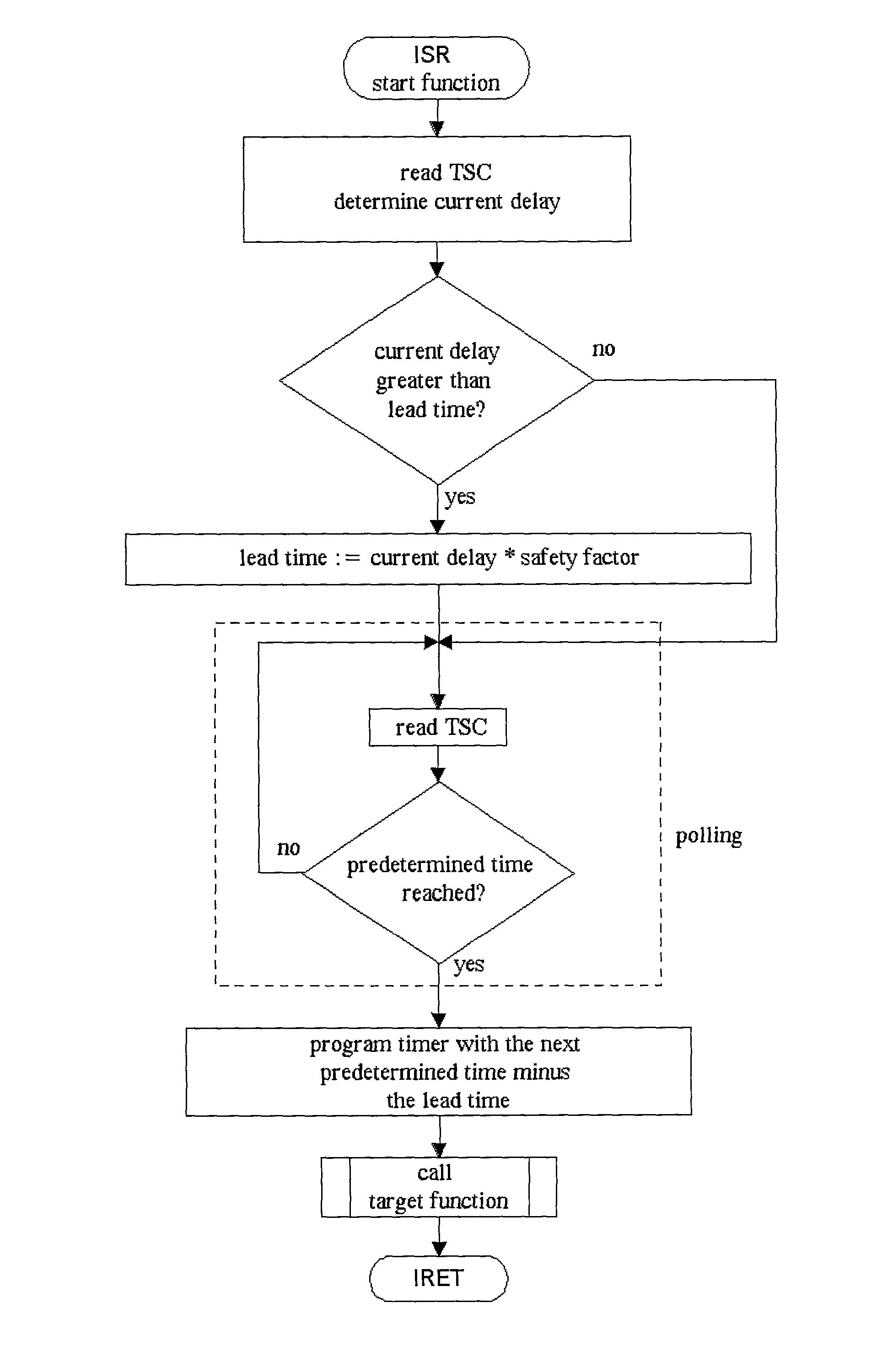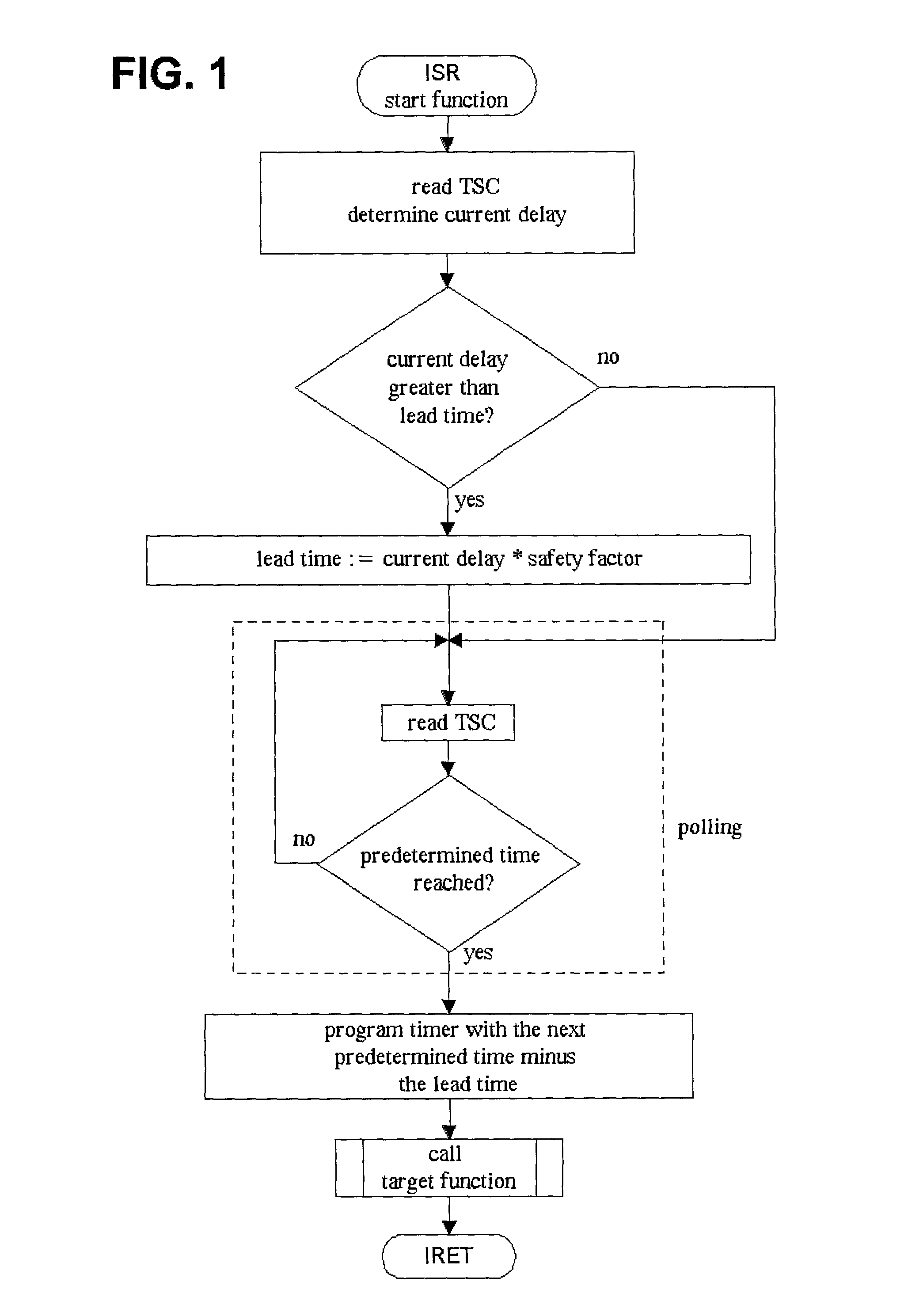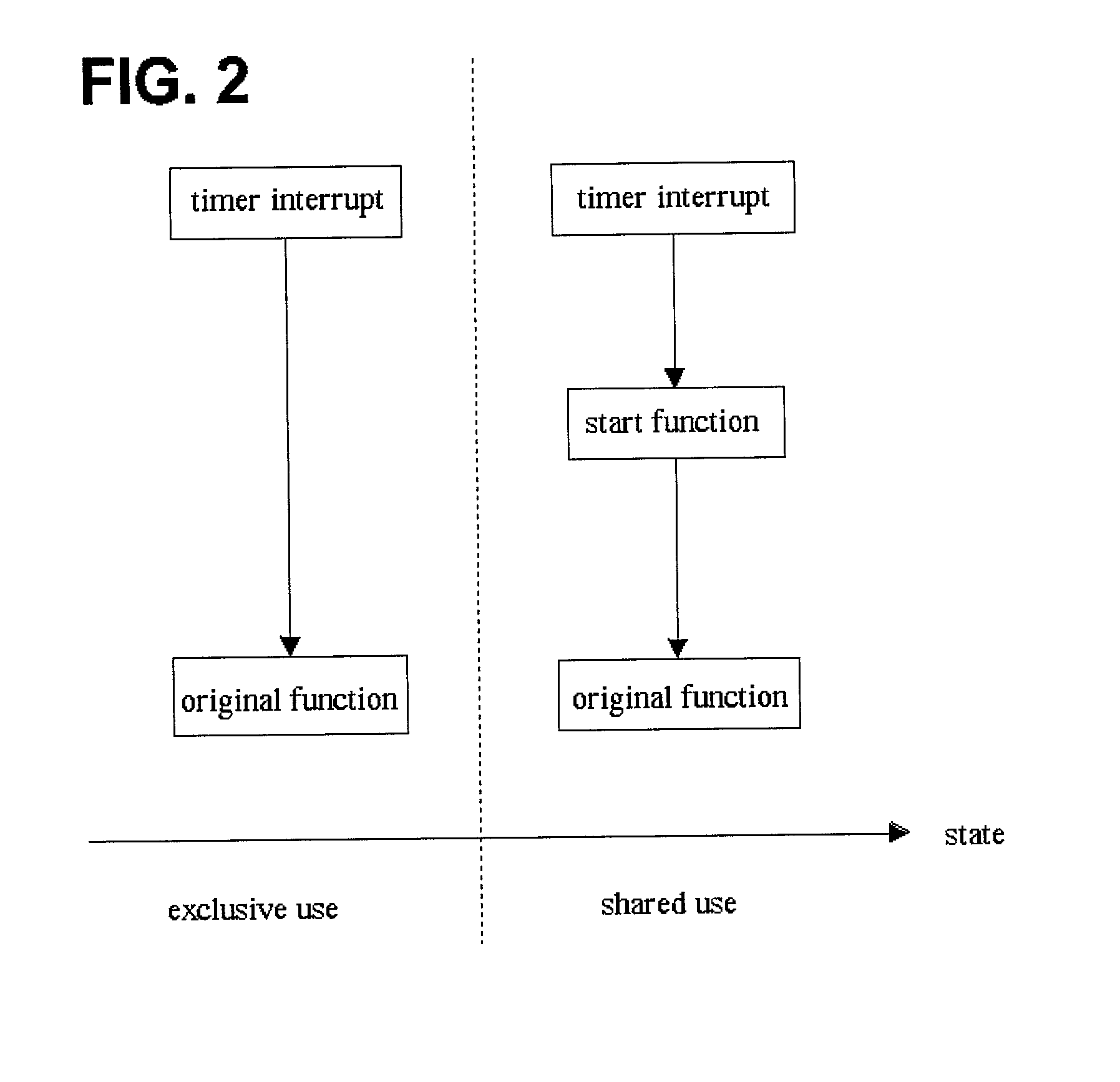Method for the scheduled execution of a target function
a target function and schedule technology, applied in the direction of multi-tasking arrangements, program control, instruments, etc., can solve the problems of not being able to execute simultaneously with one or more other programs on the same processor without detriment to time precision, and not being able to achieve multi-tasking,
- Summary
- Abstract
- Description
- Claims
- Application Information
AI Technical Summary
Benefits of technology
Problems solved by technology
Method used
Image
Examples
Embodiment Construction
[0027] FIG. 1 shows the principal execution flow of a program using the method according to the invention. As the interrupt service routine, the mentioned start function is called by an interrupt request. This reads the time stamp counter (TSC) and compares the time determined using this value with the time of the interrupt signal. The time difference represents the current delay. If the current delay is longer than the set value of the lead time of the interrupt signal, then the value for the lead time is preferably set to at least the measured current delay. Preferably, a safety factor of 1.2 to 2 is taken into account so that the lead time is longer than the measured current delay.
[0028] Next, the program executes a polling method that continuously reads the TSC and compares the read value with the value representing the predetermined time for the execution of the target function. When the read value corresponds to this reference value, the target function is called. Then the tim...
PUM
 Login to View More
Login to View More Abstract
Description
Claims
Application Information
 Login to View More
Login to View More - R&D
- Intellectual Property
- Life Sciences
- Materials
- Tech Scout
- Unparalleled Data Quality
- Higher Quality Content
- 60% Fewer Hallucinations
Browse by: Latest US Patents, China's latest patents, Technical Efficacy Thesaurus, Application Domain, Technology Topic, Popular Technical Reports.
© 2025 PatSnap. All rights reserved.Legal|Privacy policy|Modern Slavery Act Transparency Statement|Sitemap|About US| Contact US: help@patsnap.com



